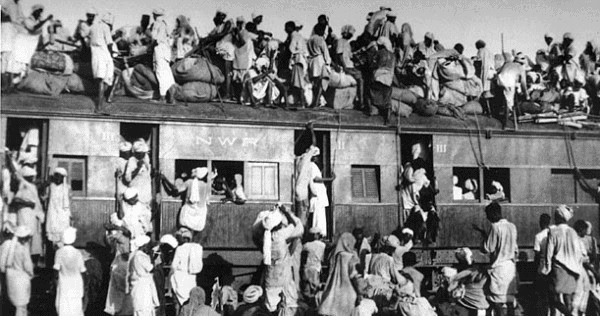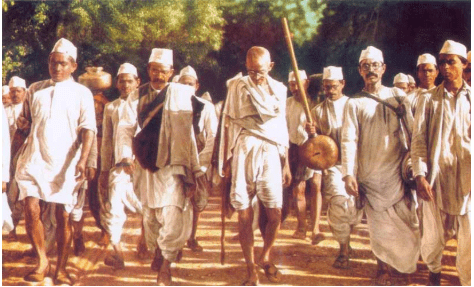UPSC Exam > UPSC Notes > History for UPSC CSE > The Swadeshi Movement & the Partition of Bengal: Morley-Minto Reforms (1909)
The Swadeshi Movement & the Partition of Bengal: Morley-Minto Reforms (1909) | History for UPSC CSE PDF Download
THE SWADESHI MOVEMENT AND THE PARTITION OF BENGAL
The rise of a new self-reliant and defiant nationalism from 1905 onwards was a consequence of several factors:
- The callousness and repression of the Anglo-lndian bureaucracy,
- Frustration and disillusionment among the nationalists at the British attitude in initiating political reforms,
- The rising aspirations of the educated class,
- The growth of discontent in industrial sectors, and
- A great political idealism, generated by the teachings of Vivekanand, Dayananda, Bankim Chandra, Tilak, Pal, Aurobindo and other leaders and writers.

Question for The Swadeshi Movement & the Partition of Bengal: Morley-Minto Reforms (1909)
Try yourself:
What were some of the factors that led to the rise of a new nationalism in India during the Swadeshi Movement and the partition of Bengal?View Solution
- With the start of the Swadeshi movement, the Indian National movement took a major leap forward.
- Women, students and a large section of the urban and rural population of Bengal and other parts of India became actively involved in politics for the first time.
- The day partition took effect on 16 October 1905 and was declared a day of mourning throughout Bengal. In Calcutta a hartal was declared.
- People took out processions and bathed in the Ganges in the morning and then paraded the streets singing Bande Mataram.
- People tied rakhis on each other’s hands as a symbol of unity of the two halves of Bengal. Later in the day Ananda Mohan Bose and S.N. Banerjee addressed two huge mass meetings .
- The message of Swadeshi and the boycott of foreign goods soon spread to the rest of the country.
- The INC took up the Swadeshi call and the Banaras Session, 1905, presided by Gokhale, supported the Swadeshi and boycott movement for Bengal .
- The militant nationalists led by Tilak, Pal and Lajpat Rai were, however, in favour of extending the movement to the rest of India and carrying it beyond the programme of just Swadeshi and boycott to a full-fledged political mass struggle.
- The aim was now Swaraj and the abrogation of partition had become the ‘pettiest and narrowest of all political objects.
The Political demands of the Moderate leaders included:
- Increase in the employment of Indians to civil services.
- Separation of judicial and executive functions.
- Extension of trial by jury.
- Expansion of membership of legislative bodies.
- Repeal of the Sedition Act of 1898.
- Expansion of education, especially technical education.
- Grant of commissions in the army and military training to the people.
- Simultaneous examination for the ICS in England and India.
- The political techniques of the Moderate leaders can be thus summarized as:
- Articulation of political consciousness in the literate classes.
- Petitioning to the authorities and holding meetings.
- Demanding administrative reforms and the termination of anti-popular legislation like the one effectuating the partition of Bengal.
- Using the electoral machinery to get into the Legislative Council
- Sending deputation to England to prevent the Indian point of view before the members of Parliament and the bar of the British public opinion.
Question for The Swadeshi Movement & the Partition of Bengal: Morley-Minto Reforms (1909)
Try yourself:
What was the aim of the Swadeshi movement and the boycott movement?View Solution

Compromise:
(i) Swaraj declared goal of Congress.
(ii) Resolution on Boycott, Swadeshi and National Education passed.
- Surat Congress Session in Dec. 1907: Extremists wanted
(i) The session at Nagpur
(ii) Lajpat Rai as Congress President, and
(iii) Reiteration of resolutions on Boycott, Swadeshi and National Education. - Moderates wanted:-
(i) The session at Surat,
(ii) Rash Behari Ghosh as President, and
(iii) To drop the resolutions on Boycott, Swadeshi and National Education.
[Intext Question]
Outcome of the Surat split was:
- With Government encouragement Moderates adopted an uncompromising attitude.
- Pandemonium at Surat and session adjourned.
- Moderates captured the Congress in April, 1908 and adopted a loyalist constitution for the Congress.
- Extremists eclipsed from national forums.
- Even Moderates suffered disillusionment and lost popularity with the masses.
Morley-Minto Reforms, 1909
- Reasons due to which this Act was passed can be summed up as:
- Indian dissatisfaction with Act of 1892.
- Extremists in the Congress advocated the policy of pressure to win political rights. The Indian council Act, 1892 did not satisfy even the Moderates.
- Curzon’s reactionary policies and partition of Bengal awoke the latent national consciousness of Indians.
- Economic distress and famines alienated the people from British rule.
- Minto’s plan was to placate political unrest by a dose of political reforms.
Facts To Be Remembered
|
- Government’s plan was to use political reforms as a device to drive a wedge between Hindus and Muslims through communal electorates.
- Important provisions can be summed up as:
- Legislative Councils both at the Centre and in the provinces were expanded.
- Total strength of Central Legislative Council was raised to 68 (Governor General + 7 Executive Councillors + 60 additional members). Term of ‘additional’ members was to be 3 years.
- Regulations provided qualifications both for candidates for election and for voters. Women, minors, persons below age of 25 years could not vote.
- Powers of Central Legislative Councils was enlarged. Members could discuss annual financial statement, propose resolutions, but Budgets as a whole was not subject to vote of Legislative Council. Members could ask questions and supplementary questions on matters of public interest.
- Non-officials were to be in majority in Provincial Legislatures.
- For the first time, system of class and communal electorates was introduced in Legislative Councils.
- Number of members of Provincial Executive Councils of Bengal, Madras and Bombay was raised to 4 each.
THE HOME RULE MOVEMENT
- Mrs. Besant’s Home Rule League was estab-lished on 1 Sept., 1916. It was established outside the Congress but was not opposed to its policies.
- Its Programme of Action was very much similar to that of Moderate leaders i.e.
- holding of frequent meetings.
- arranging lecture tours to arouse the people.
- distribution of Home Rule literature.
- propaganda in India, London and U.S.A.
- two newspapers were started in 1914-Commonwealth and New India.
- Its area of activity was the whole of India minus Maharashtra and C.P.
- Tilak’s Home Rule League was founded on 28 April, 1916. Its centres of activities were Maharashtra and C. P. It worked in cooperation with Besant’s Home Rule League
- Government attitude was belligerent. In July, 1916 the Government instituted a libel case against Tilak. And in June, 1917 Mrs. Besant and her two colleagues were arrested. Restrictions were imposed on newspapers.
- Slackening of Home Rule Movement was due to the following factors:
- Mrs. Besant’s opposition to policy of Passive Resistance.
- Montague’s announcement in British Parliament about Responsible Government in India on 20 Aug., 1917.
- Government’s policy of suppression.
Achievements
- It filled an important stage in the development of national struggle.
- It broadened the base of the national movement. Women and students participated in its activities.
- Mrs. Besant and Tilak came in forefront of national politics.
- The League did propaganda for self-government at international forums.
- For the first times idea of use of Passive Resistance was mooted so strongly.
The document The Swadeshi Movement & the Partition of Bengal: Morley-Minto Reforms (1909) | History for UPSC CSE is a part of the UPSC Course History for UPSC CSE.
All you need of UPSC at this link: UPSC
|
113 videos|550 docs|173 tests
|
FAQs on The Swadeshi Movement & the Partition of Bengal: Morley-Minto Reforms (1909) - History for UPSC CSE
| 1. What was the Swadeshi Movement and how did it contribute to the Partition of Bengal? |  |
| 2. What were the Morley-Minto Reforms of 1909 and how did they impact the Swadeshi Movement? |  |
Ans. The Morley-Minto Reforms of 1909 introduced limited electoral reforms in India, allowing for some Indian representation in the legislative councils. While these reforms were seen as a step towards self-governance, they fell short of nationalist demands for full political rights. The reforms did not fully satisfy the aspirations of the Swadeshi Movement, leading to continued agitation for greater autonomy.
| 3. How did the Partition of Bengal affect the political landscape of India during the early 20th century? |  |
Ans. The Partition of Bengal in 1905 sparked widespread protests and unrest among Indians, leading to the emergence of nationalist movements like the Swadeshi Movement. It also highlighted the growing discontent with British colonial rule and fueled demands for self-governance. The backlash against the partition played a significant role in shaping the political landscape of India in the early 20th century.
| 4. What role did Lord Curzon play in the Partition of Bengal and its repercussions? |  |
Ans. Lord Curzon, the Viceroy of India, was responsible for the Partition of Bengal in 1905. His decision to divide the province was met with strong opposition from Indian nationalists, who saw it as a deliberate attempt to weaken the unity of Bengal. The partition laid the groundwork for the Swadeshi Movement and fueled anti-British sentiments in India.
| 5. How did the Swadeshi Movement and the Morley-Minto Reforms contribute to the broader struggle for Indian independence? |  |
Ans. The Swadeshi Movement and the Morley-Minto Reforms were significant milestones in the journey towards Indian independence. The Swadeshi Movement galvanized nationalist sentiments and fostered a sense of unity among Indians, while the Morley-Minto Reforms marked a gradual shift towards limited self-governance. Together, these events laid the foundation for the larger independence movement that would eventually lead to India's freedom from British colonial rule.
Related Searches
























